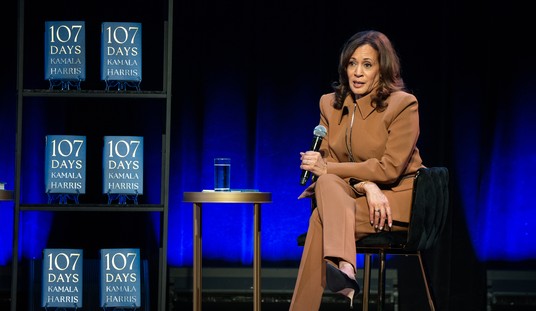=========
=========
Promoted from the diaries by streiff. Promotion does not imply endorsement.
=========
=========

Reposted from Real Clear Politics Nov.14, 2018
At this writing, the Senate and gubernatorial race results in Florida are officially in recount chaos, having triggered the “Election Lawyers’ Full Employment Act.” Surely, HBO is anticipating a sequel to “Recount,” its 2008 movie about the state’s dramatic 2000 presidential election recount (starring Kevin Spacey with “hanging chads” in a supporting role).
Eighteen years later, there is more high-stakes post-election drama because Florida is as politically split now as it was when Bush v. Gore transfixed the nation.
As a Florida resident, I also know that the state relishes its center stage role as the largest presidential swing state, and we can count on Donald Trump’s 2020 re-election campaign to whip up even more political drama. Naturally, if Republicans Rick Scott and Ron DeSantis maintain their small leads and assume office as senator and governor, respectively, they will be well positioned to help the president, a longtime part-time Florida resident, to win the state’s highly coveted 29 Electoral College votes.
Inflaming the tenuous recount process on Monday, Trump tweeted, “An honest vote count is no longer possible – ballots massively infected,” and called for the recounts to end even though they are in progress until the deadline on Thursday.
This debacle is in effect the first major political battle of the 2020 cycle. Discussed below are exit poll highlights from the Senate and gubernatorial race illustrating why Florida is now, and will continue to be, the Mother of All Swing States.
But first, for context, let’s establish the four candidates who are engaged in this ferocious recount. The Republican U.S. Senate candidate is term-limited incumbent Gov. Rick Scott, who leads three-term incumbent Democratic Sen. Bill Nelson with 0.2 percent of the vote.
Leading in the race for governor by 0.4 percentage points is former three-term Republican Congressman Ron DeSantis, a Trump acolyte. His opponent is Tallahassee Mayor Andrew Gillum, running to be Florida’s first African-American governor and a Bernie Sanders wannabe.
Before the midterms there were countless reports that Republican candidates across the nation were in danger of “losing” white college-educated women voters, a key bellwether demographic.
So how did the Sunshine State fare with these highly engaged voters? The answer is “crash and burn.”
When compared to Trump’s support in 2016, both Scott and DeSantis shed 18 percentage points’ worth of college-educated white women. According to 2016 exit polls, Trump won 60 percent of these women, while Scott and DeSantis won only 42 percent. That trend spells disaster for the GOP in 2020.
Conversely (and noteworthy) in 2016, only 37 percent of white college-educated Florida women voted for Hillary Clinton. But in 2018, Nelson won 58 percent of this politically active demographic while Gillum won 57 percent, a 20-point increase in just two years.
Another ominous sign for Florida Republicans revealed in last week’s midterm was that college-educated white women comprised only 13 percent of the electorate, down from 18 percent in 2016. But in 2020 — especially if Democrats nominate a candidate who energizes this bloc and manages to increase their electoral percentage back up to 18 percent or more — President Trump will have difficulty maintaining the 1.2 percent margin of victory with which he won the state in 2016.
Another interesting Florida midterm data point is that women constituted 55 percent of the total electorate compared to 45 percent for men. This 10-point gender gap is up four percentage points from 2016 when women bested men by only six points — 53 percent to 47 percent.
Democrats Nelson and Gillum won women by double digits, but both narrowly lost their races (we think — stayed tuned). Nelson won women by 56 percent to 43 percent over Scott, and women supported Gillum over DeSantis by essentially the same margin, 55 percent to 43 percent.
So how did Rick Scott and Ron DeSantis eke out the slimmest of victories? The answer is men, men, men. (Hat tip to the late Tim Russert, the originator of the now iconic phrase “Florida, Florida, Florida” — his prediction that the state would determine the winner of the 2000 presidential election.)
With men, Scott trounced Nelson by 16 points, 58 percent to 42 percent. DeSantis performed even better, winning men by 17 points, 58 percent to 41 percent. Therefore, in 2020 President Trump will be looking to Scott and DeSantis for help in turning out Florida’s men because both candidates increased Trump’s 52 percent winning margin among this group in 2016 by four points.
The last Florida midterm demographic that needs discussing is race. Gillum, as an African American, aimed a spotlight on this data point, and race was a contentious issue during the campaign against DeSantis.
First, let’s compare the white vs. non-white vote from 2016 to 2018. In 2016, the white vote comprised 62 percent of Florida’s electorate and the non-white vote, 38 percent. In 2018 the white electorate increased by four percentage points to 66 percent while the non-white vote decreased by the same amount to 34 percent.
Both Scott and DeSantis won exactly 60 percent of the white vote.
Gillum attracted 39 percent of white voters. Surprisingly, he won only 68 percent of the total non-white vote — winning 86 percent of the black vote and 54 percent of the Latino vote.
Meanwhile, DeSantis won 30 percent of the total non-white vote with help from 14 percent of blacks and 44 percent of Latinos. (Florida’s unique Cuban vote, which tilts Republican, was obviously a major factor.)
For the record, blacks comprised 13 percent of the state’s midterm electorate, and Latinos were 15 percent.
In the Senate race, Nelson won 70 percent of the non-white vote compared to only 29 percent for Scott. Nelson won a whopping 90 percent of the black vote, four points higher than Gillum’s share in the governor’s race. Go figure.
Gov. Scott did poorly with blacks, winning only 10 percent of their vote but still two percentage points higher than Trump in 2016.
What must be disappointing to Scott — who heavily courted the Latino vote in his Senate campaign — is losing that growing demographic to Nelson by nine points, 54 percent to 45 percent.
What do these exit poll highlights mean going forward?
Answer: Strap yourself in for 2020, both in Florida and nationally.
Given that the midterm race for governor and senator are in recount mode with lawsuits aplenty and accusations of impropriety being hurled, one can only imagine what Florida’s state of anxiety will be leading up to Election Day 2020 when President Trump frantically defends his must-win adopted home state.
If Tim Russert were still with us he would likely predict that, again, the outcome of the race will hinge on the presidential candidate winning “Florida, Florida, Florida.” But 18 years later, Russert would also be wearing a crash helmet and other protective gear.













Join the conversation as a VIP Member